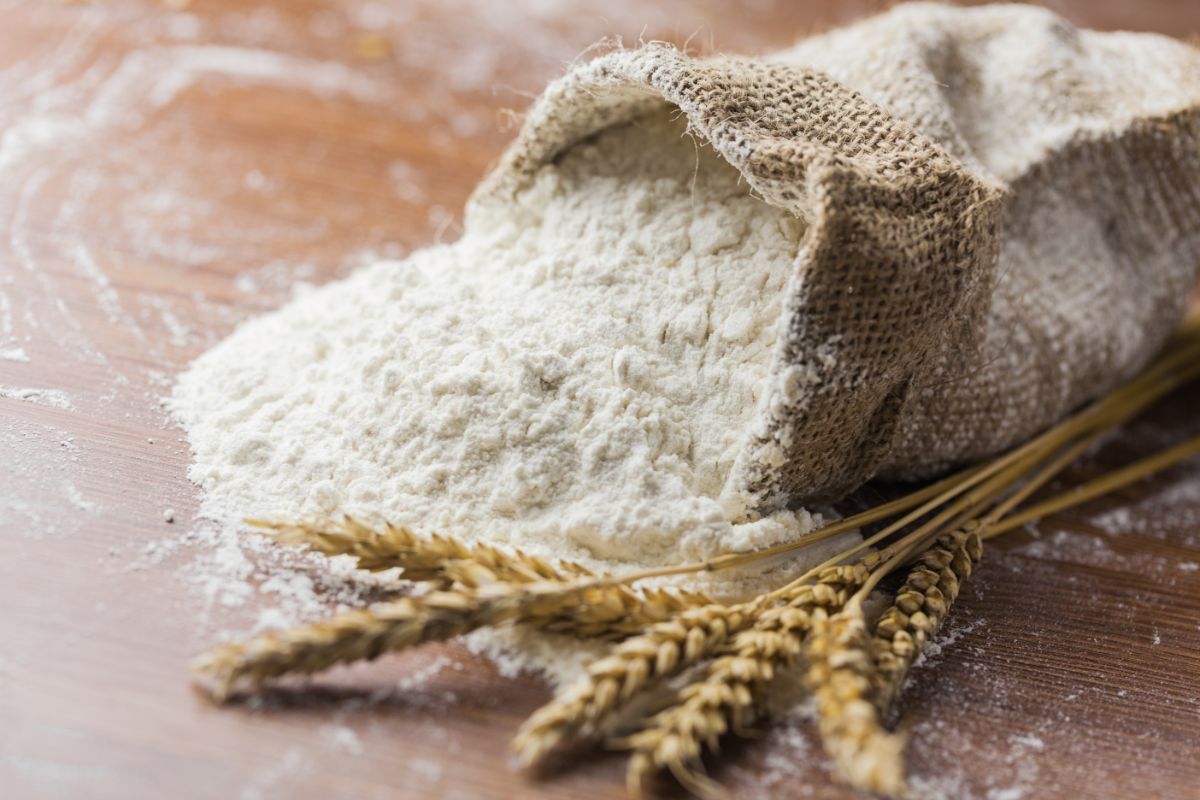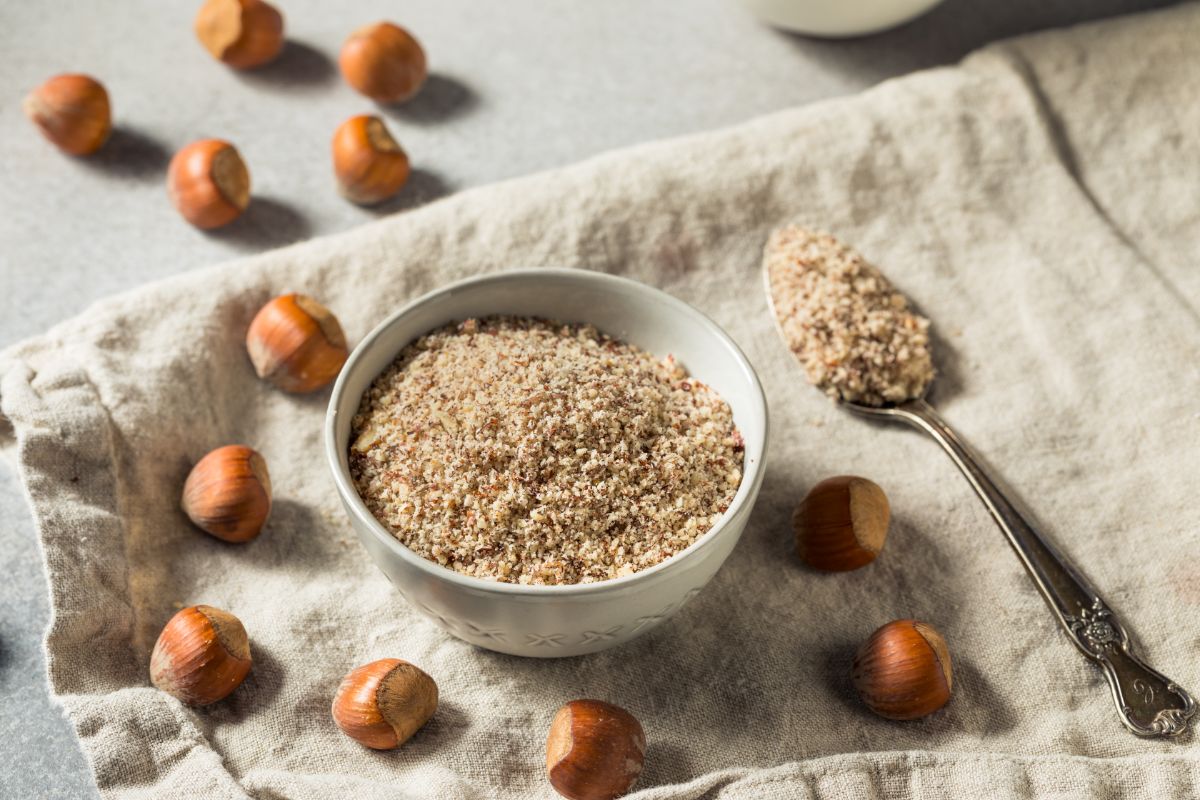What flour has the least protein? The answer depends on whether or not you’re talking about wheat flour, flour derived from other grains, and flour that doesn’t come from grains at all. We’ll also share a few tips on bringing down the amount of protein in your baking mix regardless of your reason for doing so.
What wheat flour has the least protein?

The protein content of wheat can range from 5 to 15 percent. The protein content of all-purpose flours ranges from 8 to 11 percent. Bread flour has a higher amount of protein.
That ranges from 12 to 14 percent. Cake flours contain protein content. They have more starch; this makes cakes and pastries soft. Their protein content can be as low as 7 percent. Pastry flour has a fine texture and protein is 8 to 9 percent.
Cake flour may have protein levels of 5 to 8 percent. And that ratio can go even lower if there is sugar added to it. In short, “pastry” and other soft flours have the lowest protein content of wheat flours.
Will processing lower the protein content of grain?
Bleaching flour will not reduce its protein content. Whole wheat will typically have more fiber and less carbohydrates than refined flour, but protein content won’t vary much.
However, gluten flour is milled from spring wheat that hasn’t grown developed much starch yet. This flour can contain up to 45 percent protein. The gluten flour may be mixed with non-wheat flour to strengthen the dough structure or used to make diabetic bread.
Gluten flour can also be mixed with other types of flour to strengthen it or increase its protein content. This is the same reason semolina flour, made from the hardest, highest protein wheat available, has 13 percent or more protein in it.
Which non-wheat grain flours have the least protein?
Some people think that non-wheat flours will have less protein than wheat, but that’s rarely the case. For example, if wheat flour has 11 grams of protein, hemp flour is even worse at 30 grams. Linseed flour has a whopping 40 grams of protein.
The gluten-free grain with the lowest protein content that is commonly available is white rice. It has just 13 grams of protein per cup of raw grain. Brown rice actually beats it, coming in with 15 grams of protein per cup; it has more fiber, too.
Note that you can buy white and brown rice flour.
If you count tapioca as a grain, then tapioca flour wins in this category. It has zero protein. It is almost entirely carbohydrates. Conversely, it contains almost no nutrition beyond empty calories.
It beats potato flour by a wide margin. Potato flour contains 11 grams of protein per serving while being rich in vitamin B6, niacin, folate and thiamin.
Which non-grain flours have the least protein?

Nut flours tend to be high in protein content. However, there are people who need to limit their consumption of protein for health reasons. This rules out an almond meal or hazelnut flour as a wheat flour alternative.
However, macadamia nuts are a viable solution provided you aren’t allergic to them. Macadamia flour contains no fat or protein. It is moderately high in sugar, carbs, and fiber. It also packs 718 calories per 100 grams. You’d use one cup of macadamia flour for one cup of wheat flour.
If you are set on using nut flours, pecan meal has the lowest overall level of protein. Pecan meal has 9.2 grams of protein per 100 grams. For comparison, the hazelnut has 14 grams and the almond meal has a whopping 21.4 grams.
Coconut flour has healthy fats, but it also has 17 grams of protein. That means it doesn’t count in our “low protein” checklist except relative to other non-grain flours.
Psyllium husk powder is derived from the seeds of the Plantago ovata. It is almost entirely fiber. Conversely, it has almost no protein or carbs. While it can’t be used to make bread, it can be used as a thickener in soups. Don’t use flaxseed meal, though, if trying to keep the protein level down. It is nearly 20 percent protein.
How does the protein content affect baking?
We’ll ignore the fact that some need to keep protein consumption low just as others try to minimize calories or carbs. We’ve already mentioned that more protein means more structure.
This is essential when making cut-out cookies, thick pizza crusts, or yeasty bread. On the flip side, lower protein flour has a more tender “crumb”. This is best for melt in your mouth cookies and soft sweets.
Many people simply want lower protein flours to get the right consistency of their baked goods. The less protein it has, the lighter and airier the final product. High protein flour will typically result in dense, chewy bread. And it is easier to end up with a hard to chew loaf. That’s hard to salvage if it dries out or comes out as hard as a rock.
What if I want to bake with low protein flour to reduce my allergies to gluten?
Some people are seeking flour with low levels of protein because it contains less gluten. However, if you need to avoid gluten, you’re better off using other types of flour than wheat flour.
This could be rice flour, amaranth flour, or almond flour. In short, you can find gluten-free flours that are high or low in protein, based on your tastes and tolerances.
For example, if you’re allergic to gluten, don’t try to use nut flour until you know you aren’t allergic to nuts.
How can you lower the protein in your recipe?
First, don’t add gluten flour. Second, use the right type of flour for your recipe. Don’t use general-purpose flour with its moderately high protein level when you want low protein cake flour.
Third, be careful with how much flour you add. Every spoonful of flour adds protein to the recipe.
If you’re concerned about overall protein content, remember to take non-flour ingredients like milk and eggs into account. Don’t go for low protein flour and make up for it with several eggs as a binder.
